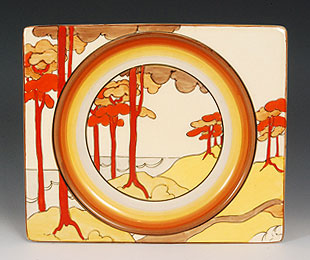Art and Design
Autumn term
Drawing and painting, developing digital art.
We have been looking at the work of Hannah Hoch
Hannah Höch was a German artist. She was born in 1889 and died in 1978.
Höch was one of the key artists who started an art form called photomontage.
Photomontage is a type of where images that already exist are cut up and rearranged to make a new image.


This term, the children will be looking at the famous ceramic artist and designer.
Here are some of the childrens brillant work.
Clarice Cliff is regarded as one of the most influential ceramics artists of the 20th Century and her work is collected, valued and admired the World over.
Below are some key facts about her:
Key Facts:
- Clarice Cliff born on January 20th 1899 in Tunstall, Stoke-on-Trent.
- Clarice started work at the age of 13 in 'The Potteries'.
- Moved to the AJ Wilkinson's pottery factory in 1916.
- Clarice given her own studio. The famous 'Bizarre' wares launched 1927.
- She marries her then boss, Colley Shorter, in 1940.
- Moves with Colley to Chetwynd House, with its stunning gardens.
- The factory continues to produce pottery bearing Clarice's name until 1964e some of her art
Below art pieces


The children are designing their own version of Clarice Cliffe this week. They have looked at various design which have helped them to create their own piece.

Spring 1
Art this term follows our work in history - World War 2
We are looking at the work of Henry Moore. Henry Moore was born on 30th July 1898 in Castleford in Yorkshire. His best known work features massive bronze scultpures. These are usually abstract versions of the human form and often contain hollow spaces. His sculptures are often public artworks and are located all over the world. Henry Moore decided he wanted to become a sculptor at the age of eleven. Moore fought in World War 1 and he was badly injured during a gas attack in the Battle of Cambrai in 1917. He attended the Royal College of Art in London, and in 1924 he sp Moore was commissioned as a war artist. He produced a series of drawing of Londoners using the London Underground as a shelter, during the Blitz.
 Reedley Primary School
Reedley Primary School![IMG_1771[1].JPG](/uploads/378/images/IMG_1771[1].JPG)
![IMG_1770[1].JPG](/uploads/378/images/IMG_1770[1].JPG)
![IMG_1804[1].JPG](/uploads/378/images/IMG_1804[1].JPG)
![IMG_1792[1].JPG](/uploads/378/images/IMG_1792[1].JPG)
![IMG_1786[1].JPG](/uploads/378/images/IMG_1786[1].JPG)
![IMG_1806[1].JPG](/uploads/378/images/IMG_1806[1].JPG)